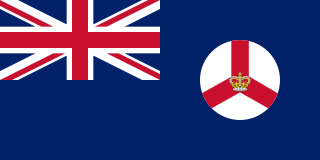Related Research Articles

The politics of Singapore takes the form of a parliamentary representative democratic republic whereby the President of Singapore is the head of state, the Prime Minister of Singapore is the head of government, and of a multi-party system. Executive power is exercised by the cabinet from the parliament, and to a lesser extent, the President. Cabinet has the general direction and control of the Government and is accountable to Parliament. There are three separate branches of government: the legislature, executive and judiciary abiding by the Westminster system.

The People's Action Party is a major conservative centre-right political party in Singapore and is one of the two contemporary political parties represented in Parliament, along with its main opposition, the Workers' Party.

The Workers' Party of Singapore, also known simply as the Workers' Party, is a major centre-left social-democratic and democratic socialist political party in Singapore.
The Labour Front was a major left-wing political party in Singapore that operated from 1955 to 1965.

There are currently two types of elections in Singapore: parliamentary and presidential elections. According to the constitution of Singapore general elections for parliament must be conducted within 3 months of the dissolution of parliament, which has a maximum term of 5 years from the first sitting of parliament, and presidential elections are conducted every 6 years.

Haji Omar Lim Yew Hock was a Singaporean and Malaysian politician of Chinese descent, who served as a Member of the Legislative Council and Assembly from 1948 to 1963, and the second Chief Minister of Singapore from 1956 to 1959.
The Singapore People's Alliance was a political party in Singapore founded in 1959 and drew its members from the abandoned Labour Front and never won any seats in the Parliament of Singapore. However, the party did win 4 seats to the Singaporean Legislative Assembly in the general election of 1959 under the leadership of former Chief Minister Lim Yew Hock, with a popular vote of 107,755 or 20.7% of the total number of votes. Following the election, the Liberal Socialist Party merged into it.
The Singapore Alliance Party, or sometimes known as just Singapore Alliance, was a coalition of political parties formed in July 1961 that contested several elections in Singapore, notably the 1955 Elections of Singapore and the 1963 Elections of Singapore. It consisted of the local branch of the United Malays National Organisation (UMNO), the Malay Union, the local chapters of the Malayan Chinese Association and the Malayan Indian Congress, and former Chief Minister Lim Yew Hock's Singapore People's Alliance (SPA).

General elections were held in Singapore on 30 May 1959. They were held under the new constitution and the first in which all 51 seats in the Legislative Assembly were elected. This was the first election victory for the People's Action Party (PAP), as they won a landslide victory with 43 seats, and the party has since remained in power after the elections.

British Singapore or simply Singapore was a crown colony of the United Kingdom from 1946 to 1963. When the Empire of Japan surrendered to the Allies at the end of World War II, Singapore was returned to the British in 1945, having controlled the territory since 1819 as part of the Straits Settlements. In 1946, the latter were dissolved and Singapore together with the Cocos-Keeling and Christmas Island became a separate crown colony. The colony was governed directly from London until it gained partial internal self-governance in 1955.
References
- ↑ "Singapore Elections - 1959 Legislative Assembly Election Results". www.elections.gov.sg. 11 September 2006. Archived from the original on 21 February 2008. Retrieved 27 June 2020.